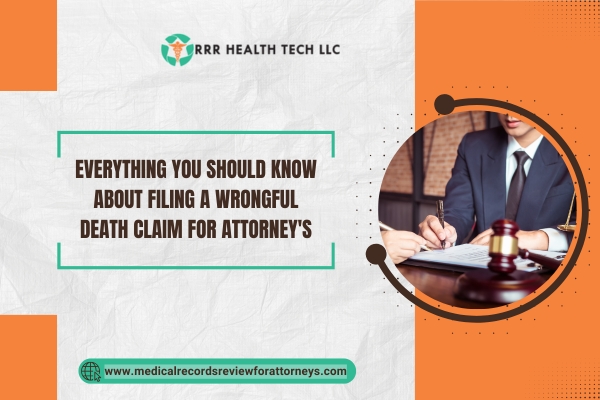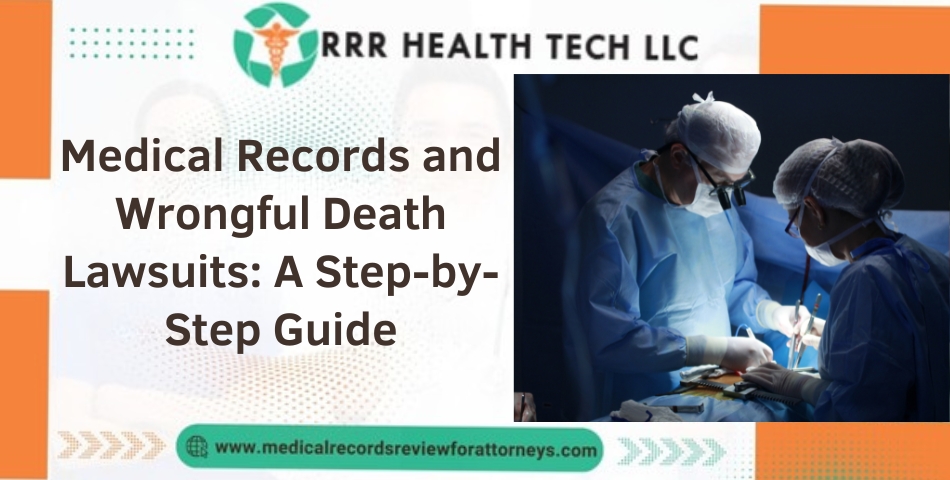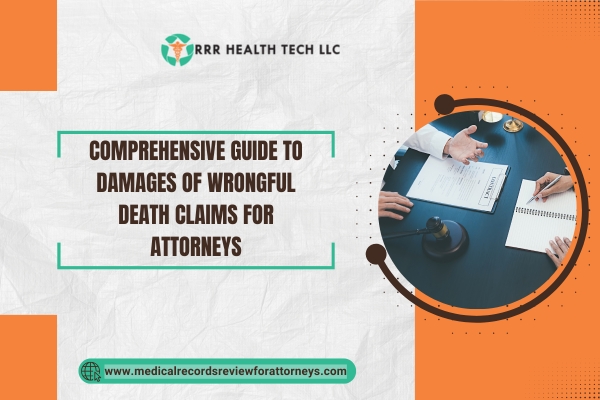
Introduction
Claiming wrongful death becomes very tedious because of all the legal steps that need to be followed very carefully. Being tactful and skilled dealing with great’s amounts of sensitive information is very important and one has to pay great attention to detail. As a medical records reviewing company, we assist lawyers dealing with such tedious tasks all over the United States of America. In this article, I will address everything related to wrongful death claims and how medical record reviewing strengthens such claims providing a very thorough approach.
What is a Wrongful Death Claim?
- Definition: A wrongful death claim comes into existence when a person due because some other body did not fulfil their duty of care which has resulted into either intentional or unintentional harm crippling one individually physiologically and physically.
- Legal Basis: These allegations are primarily placed on tort laws giving the justice the power for families to sue in relation to the unfortunate loss to the deceased.
Key Components of a Wrongful Death Claim
Building up the negligence
- Duty of Care. The accused has to showcase he was caring his life or her life over.
- Damage: there has to be some sort of negative financial burden which makes the death puts on the survivors alongside emotional affect needs to be proved as well.
Kinds of Damages
• Economic Damages: Wages lost medical expenses, and even the cost of funerals fall under these damages.
• Non-Economic Damages: Pain and suffering, loss of companionship and emotional distress fall under these damages.
How to File a Wrongful Death Claim
Step 1: Consultation with an Attorney
• The Role of an Attorney: It is imperative to consult an attorney with expertise in wrongful death cases who will guide you in every step.
Step 2: Gathering Evidence
• Reviewing Medical Records: Here is where our services come in. We help attorneys by providing thorough medical record reviews to help find evidence for their case.
Step 3: Filing the Claim
• The claim needs to be presented in front of the relevant court with all the accompanying documents and evidence as set out in the guidelines.
Step 4: Negotiation and Settlement
• Courtroom Action: Most of the time, these cases are settled before court proceedings begin. The defendants may be persuaded to agree to favorable terms, and hence the plaintiffs mange to settle in negotiations with the plaintiffs.
Step 5: Trial
• Negotiation before Litigation. However, if no agreement is reached, the case goes to trial, where both sides have the chance to argue their case and provide evidence.
What to Look For When Pursuing a Claim
• Negligence proof: Delivering a high standard for proving the links in the defendant’s actions and the resulting death is difficult.
• How the process affects families: The lawyer has to take into account the effect of the emotional burden for the families dealing with such loss.
• Insurance Companies: Negotiations with insurance companies can be complex as they attempt to lessen pay-outs.
The Role of Medical Records Review in Wrongful Death Cases
Importance of Having Correct Medical Records
• Care Evidence: Medical records capture care provided (or care not offered) to the deceased, which is important for every case.
• Expert Testimony: Primary reviews enable us to assist in determining experts who will testify for the standard of care defense
How We Help Lawyers
• Reporting Results: Timely reports to attorneys who rely on our documents for the well-founded situations presented to them.
• Complete Reports: Medical records are often complex, therefore we strive to deliver reports that are clear, accurate and which give complete analysis.
Case Study
Case Study 1: Wrongful Death resulting from misdiagnosing a patient.
• Overview: A patient died after not receiving proper attention for a condition they could have been treated for.
• Problem: Their death is not supported by sufficient evidence that the misdiagnosing lead to the death.
• Solution: Our grant claim filed records review produced the testimony that that showed the omission of due care was evident.
Case Study 2: Neglecting the elderly in a residential home leading to death.
Overview: An elderly in continued to be neglected and died while in residence at a nursing home.
Problem: Where does the liability for the nursing homes actions lie?
Solutions: Based on the examination of care logs and the reviewed medical records, there seem to be an underlying pattern of neglect.
Conclusion
As discussed before, filing in a claim for wrongful death is multi-dimensional because it involves a whole host of legal battles, emotional distress, and navigating through complicated frameworks all at once. As previously stated, attorneys need the skill and expertise of companies offering medical records review – they help build the case with crucial components that need to be understood well. We — amedicareclaims.com — take pride in offering complete and prompt analyses so that legal practitioners receive the required materials for advocacy. As there is constant change in wrongful death claims, it is important to devise wide approaches to aid families affected in seeking justice.


